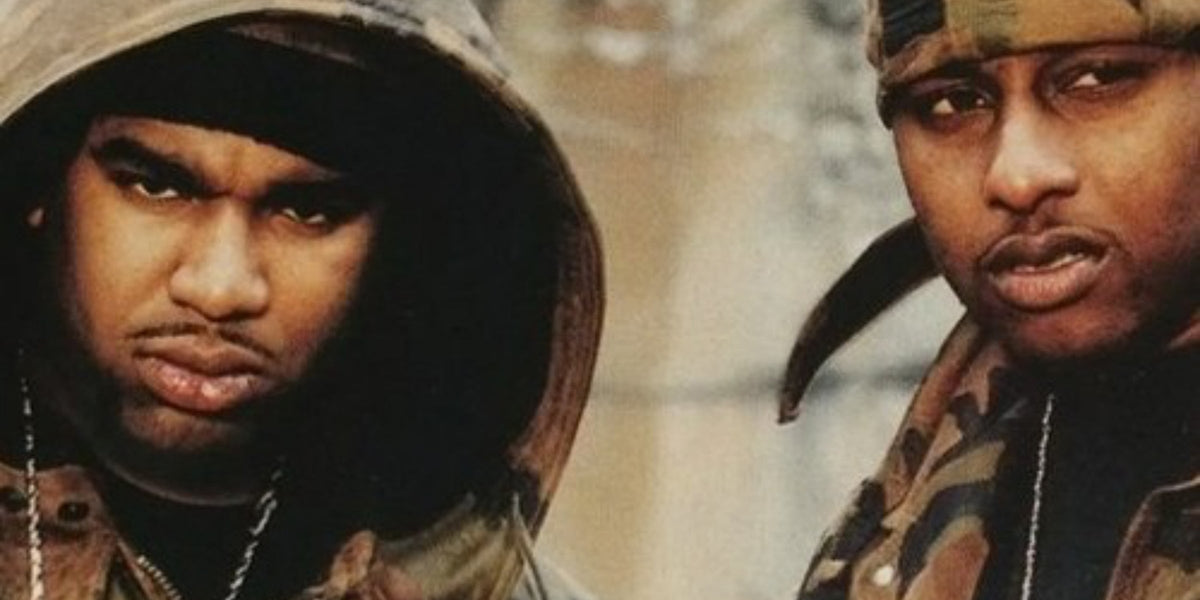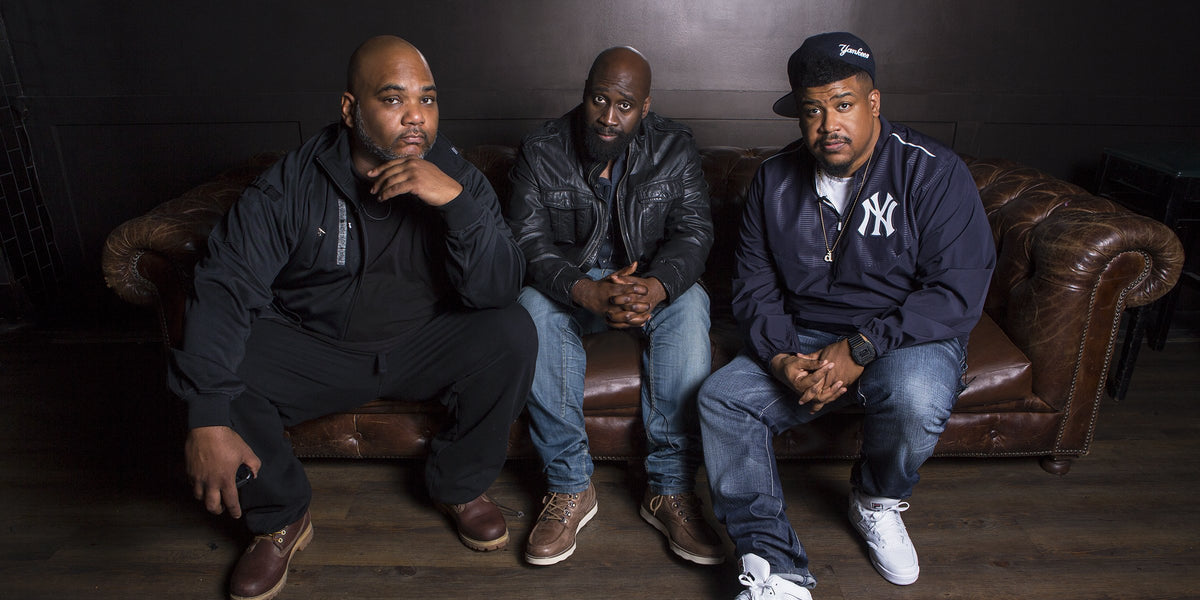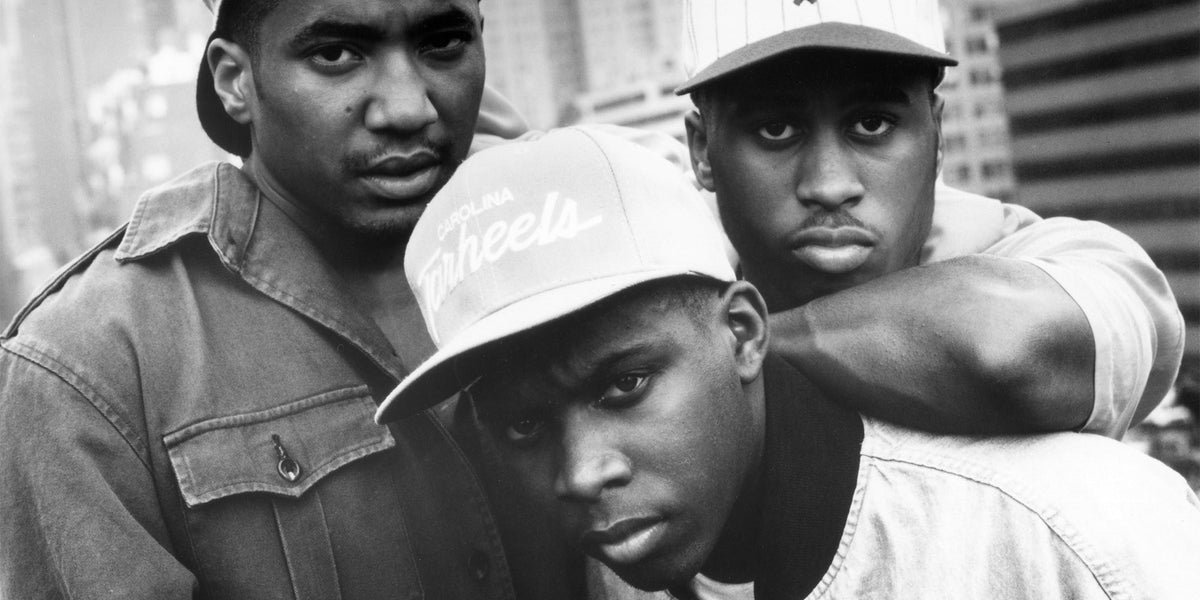‘The Coming’: Busta Rhymes’ Virtuosic Solo Debut
On the 1996 record that brought high-level lyricism to the masses
There were only five years left. When Busta Rhymes made his mark in 1991, on A Tribe Called Quest’s “Scenario,” almost instantly heads were clamoring for his full-length debut. A playful and furious whirling dervish of baby dreads and gruff boisterousness, Busta made a quantum leap on Tribe’s single with bars that were so forward-looking that, in the video, even the colors on his shirt seemed to be in perpetual motion. Busta Rhymes was suddenly occupying everyone’s world just off of one unforgettable verse.
His impromptu “Rawr! Rawr! Like a dungeon dragon” outburst resonated like a pugilistic earworm, catchy enough to entrance your preschooler, like a non-stop marathon of Yo Gabba Gabba!, and scrappy enough to stalemate the neighborhood cypher, like a bellicose bat signal warning rivals that their boots are about to get smoked. Busta was arguably the most anticipated rapper ever pending a solo debut. And in the spring of 1996, it finally dropped on an awestruck public.
But before his magnum opus (and that breathtaking “Scenario” verse), Busta Rhymes was first introduced to the world as one-fourth of Leaders of the New School, a Long Island-based posse whose kinetic performances reminded people of the call-and-response routines of old-school pioneers like Cold Crush Brothers. But from the jump, Busta had his eye on the future, as if it were the class cutie he’d be willing to risk detention for.
On the group’s 1990 song, “Mt. Airy Groove,” he seems to sum up the scene (”Got the Cracker Jacks, Leaders of the New School, and the Now Or Laters”), before affirming his mission to “create a vibe that is really dominating / As we keep elevating, and traveling.” This same shock-of-the-new appeal — emboldened by unquestionable hip-hop bona fides, and already evident at the beginning of Busta’s career — informed the manic magnetism he’d exhibit years later on The Coming.
Meanwhile, in July 1991, Busta Rhymes, Dinco D and Cut Monitor Milo released Future Without a Past, which earned them props (and pull-out posters in those beauty salon and barbershop staples, Word Up! and Right On!) off of their droll single “Case of the P.T.A.” The album was decent but lacked the depth and sophistication displayed on other releases (including those from Gang Starr and fellow Native Tongues, De La Soul) from that year. But Busta was immediate hip-hop royalty. And the crew had all the right looks from the culture leading up to their collaboration with Tribe, later that fall.
“Scenario” notwithstanding, L.O.N.S.’s and, more to the point, Busta’s true talents came to the forefront when they performed live on In Living Color on February 17, 1991. Everyone was talking about it, like some trending topic way back in the Skypager era.
Blackness was in charge and the pulse and vibration of the times were potent and fast-paced. From Arsenio to New Jack City, Black television shows and films proliferated during this period. And here was the hottest new group on the hottest new show — back when that meant that everyone was tuning in at the same time, as opposed to streaming at your leisure — performing their buzzing single, mere days after its release, on the same network Bill O’Reilly would soon call home.
This golden age for Black expression, which Busta Rhymes was part of, petered out before the end of the ’90s (much like L.O.N.S.’s scatter-brained sound). It reminds you of that voiceover part from Joe Pesci’s character in Martin Scorsese’s Casino, which came out the year before Busta unleashed The Coming: “It turned out to be the last time that street guys like us were ever given anything that fuckin’ valuable again.”
In the interim, Busta and company capitalized on the moment. And viewers from Michigan to Montana got to see the Strong Island MCs ripping through a set whose giddy highlights included them joyously executing the East Coast Stomp in fresh new sneakers as the young Black cast (and Jim Carrey) bopped their heads and swayed along on the sidelines. It was a staggering display of the group’s dynamics before their breakup two years later. Rapping frenziedly into the camera as the closing credits rolled, Busta Rhymes felt like a hyperactive harbinger of something raw, cutting-edge, and exciting.
And he achieved the impossible on The Coming. No one from Busta’s era possessed this kind of broad uncompromising appeal. Like 13 shots of Red Bull in the filthy eon of Tiger Bone, these long-dozen songs assumed an uproarious upper that blasted off when it seemed like everyone was still bent off of gloomy boom-bap. But Bussa Buss continued to be about that dusty fingers life. (In his downtime, Busta bodied both the Buckwild remix for the Artifacts’ gritty 1994 single, “C’Mon Wit da Git Down,” and the Diamond D-laced “Build Ya Skillz,” his 1995 collaboration with KRS-One.) He just made everything seem bigger, brighter and bolder.
When Busta bellows, “Fuck what you heard, you ain’t heard this before” at the close of his snarling verse on “Everything Remains Raw,” it truly feels like an OS upgrade for the future of flows. Compared to his usual histrionics, Busta’s cadence feels relatively pared-down, and there’s some finesse implicated in his pauses, enunciation and the care with which he delivers his doubled-up vocals. It’s like he’s trying to squeeze every ounce of humid aggression from these torrents of staggered stanzas. “Weak niggas just fall and keep tumbling / Distribute lyrics like I’m hand-to-hand herb hustling,” he moans in time to the track’s dramatic guitar licks — the mournful sound of a Benz-rattling death dirge. Busta repeats the hook as if he’s pep-talking himself in case there’s something too milquetoast or refined lurking somewhere on the horizon.
It’s no coincidence that the first 40 seconds of the Hype Williams-directed video for his single, “Woo Hah!! Got You All in Check” depicted Busta riding around Times Square to the harsh chords of “Everything Remains Raw.” It seemed like the most obvious thing in the world at the time but looking back, now, some 27 years later, The Coming seamlessly blended sensibilities that would be in direct conflict with each other the following year. Its sound is predominantly boom-bap, but Busta’s star power ensured that it was an unabashed commercial success, reaching No. 6 on the Billboard 200 chart.
Moreover, “Woo Hah!! Got You All in Check,” which peaked at No. 8 on the Hot 100 chart, was a bona fide mixtape favorite that dominated the streets throughout the winter and spring of 1996. The video — a tantalizing swirl of Baskin Robbins-like colors filtered through Hype’s hypnotic lens — didn’t need to do the heavy lifting, either: The song itself feels as epic as a Dreamworks franchise. Busta sounds like he stepped right out of a stop-motion-animated blockbuster to entice you with patois-inflected witticisms. And the song’s brilliant beat — like someone threw some low-end boom over the theme music from Mario Kart — was so addictive that Puffy recycled it months later for Faith Evans’s single, “I Just Can’t.” In short, The Coming provided you with that gutter head-knock that also made you feel invincible on the dancefloor.
The Zhané-assisted “It’s a Party” was grown and sexy, demonstrating that the author of the louche “Feminine Fatt” possessed a mature side — something crucial to his artistic development. There’d been the sense that Busta, who was great on features — like the one he’d gifted Craig Mack in ’94, for his immortal “Flava in Ya Ear (Remix)” — couldn’t sustain a whole album on his own, that people might get tired of his vociferous, energetic growl throughout 13 tracks. It’s a testament to both Busta’s versatility and overall strengths as a songwriter that, with “It’s a Party,” he cracked a code, creating a swank early vibe favorite that’s perfect for standing on couches, although his supposed fan base was still running down on bouncers. Over Easy Moe Bee’s luscious xylophones, Bussa Buss mutes his rowdy bark to a grizzly, conversational coo, harmonizing each couplet with the pulsating bass so that each line in the song sounds crisp, melodic and muscular.
It’s telling that in the same year that De La Soul, on their fourth album, Stakes Is High said, “Sick of R&B bitches over bullshit tracks,” Busta Rhymes would feature (as would Pos, Dave and Maseo on said album, later that July) soulful queens Zhané on an impeccably produced track. In retrospect, songs like “It’s a Party” (and De La’s “4 More”) serve as proof that heads were not upset at all rap and R&B hybrids; rather, it was a feeling in the air — something you couldn’t quite put your finger on. Did that hard-ass rap song really need that Charmin-soft hook? Who was this made for? The Most Authentic Shit Ever — namely, the most cartoonish, simultaneous iterations of “hard” and “soft” — quickly ceased to be authentic.
What can be said about songs like “It’s a Party” is that they sound wholly organic — only built for the big moods that they describe (cool-out bops designed for posting up and getting fly). Busta’s idiosyncratic outbursts and slippery flows are still present. And by adding Zhané’s lush vocals Busta made it work on his terms. It’s a critical upgrade in Busta Rhymes’s sound that would serve him well, years later, on songs like 1999’s Janet Jackson-driven “What’s It Gonna Be?!”
But adapting and learning how to thrive in new environments was a given for Busta Rhymes. Born of Jamaican descent in East Flatbush, Brooklyn, Busta grew up in a household where the music of James Brown, the Temptations and Bob Marley played constantly. And if you wanted to stand out it would behoove you to dazzle the fam by busting into the splits at the next get-together.
Falling instantly for hip-hop, after hearing “Rapper’s Delight,” Busta even took that love of the culture with him on summer trips to England where, at age 12, he went to visit relatives and began impressing people with his breakdancing skills. It was something like an early taste of life on the road for young Busta, who was born to thrill audiences.
Around the same time, Busta’s family moved from Brooklyn to Uniondale, Long Island, where he met L.O.N.S. members Dinco D, Charlie Brown and Cut Monitor Milo. Long story short, they began rocking shows together as the opening act for Public Enemy, whose leader Chuck D anoints Busta with his famous nom de plume (inspired by wide receiver George “Buster” Rhymes).
The group then lands a record deal with Elektra — based solely off of Busta’s star power, which A&R Dante Ross sees instantly, as does the world — which brings us, once again, to that mind-blowing “Scenario” verse. The streets all but command him to go solo. Maybe a group was always going to be too confining for a man who moved as if evolution were the only constant.
On an episode of his People’s Party podcast, Talib Kweli talked about Busta’s pathbreaking appeal. “He’s an innovator of style — so unique and clear with his vision,” he said. “People had no choice but to sit back and admire. This man’s a true original; he’s not grafted.”
After the release of their second album T.I.M.E., Leaders of the New School decided to part ways. But the ill-fated sophomore album marks the beginning of a new creative phase for Busta, whose distinct visionary gifts began to bloom.
“I was the first artist to really be on everybody’s record in the dynamic that I was,” Busta admitted in a 2020 interview with GQ. “It was a bittersweet moment because I never wanted it to end with Leaders, but it was the sweetest joy to be able to venture off on my own and find my true self with the support of all of the relationships with my peers that were really genuine, like Diddy and Q-Tip.”
The zany style Busta had flaunted at the beginning of his career was phasing out as G-Funk took over, and there were new obligations for rappers to meet in their ongoing bids for continued relevancy. For artists like Busta, Q-Tip pointed to the future. Tip, during the recording of The Low End Theory, studied Dr. Dre, whose ultra-clean production style on classics like Straight Outta Compton inspired the exquisite stripped-down sound of Tribe’s second groundbreaking LP.
Starting with 1992’s “Scenario (Remix),” Tribe had begun to modify their sound to adjust to the times. Ditching the cuddly boho charm of their early work, they adopted a punchier approach, which would define their third album Midnight Marauders. Busta, who would feature on “Oh My God” off of that album, was taking notice.
He had the right ideas going into the group’s 1993 LP. But other members quickly ruled them out. In a 2009 interview with the website Unkut, Dante Ross said, “When we went to make the second Leaders of the New School record I had Q-Tip ready to help me make the whole record with them, like the way he did for Mobb Deep’s album. None of them dudes were with it except Bus, and I saw right there that Bus is smarter than these dudes.” Never mind that other members of L.O.N.S. blame Ross for the group’s demise. His comments, if anything, remind you of Busta’s excellent taste, and why The Coming in particular demonstrates his exquisite ear for beats.
From the Q-Tip-assisted “Ill Vibe,” with its spacey futurist blurts and cool-as-a-side-eye chords sequence to the Dilla-helmed “Still Shining” — all restless churchified keys and brain-fracturing snares — The Coming continues to challenge and thrill listeners. And breaking down the innovative approach he utilized in creating “Everything Remains Raw,” Easy Mo Bee told Blues & Soul magazine in 2005, “There were no samples to clear for that track. Why? Because I took a 1.3-second sample and turned it into a whole record (laughs). I really wanted to create a brand new sound.”
And what about those bars? One of the remarkable things about The Coming is that it brought high-level lyricism to the masses. (Busta’s flows on his first album are as outré as his wardrobe choices have been over the years.) His only competition in ’96, as far as virtuoso lyricism and mass appeal go, were OutKast and Lauryn Hill. When on “Flipmode Squad Meets Def Squad” he spits, “Raw, rapid-fire flows, while the music keeps you niggas groovin’,” he practically summarizes the album’s captivating draw.
Whimsical, chaotic, and completely original — an exuberant, nonstop turn-up, with more flavors than a family-size pack of Fruit Stripe, The Coming has something for everyone. And whether there’s only half a decade or whole millennia remaining, its impact feels eternal.
Will Dukes is a New York City-based journalist who has been documenting the culture for close to 20 years. His essays, features and reviews have appeared in such publications as Pitchfork, Rolling Stone, Stereogum, Mic, The Village Voice, XXL and VIBE.
Related Articles
Join the Club!
Join Now, Starting at $36Pages








